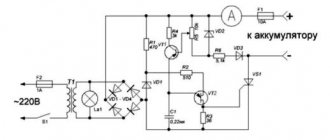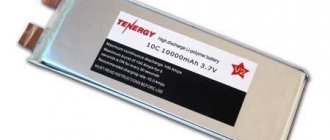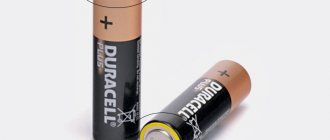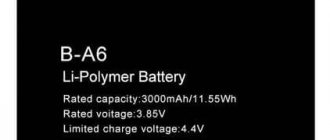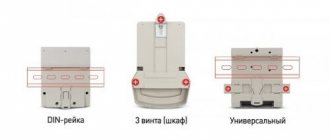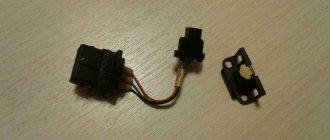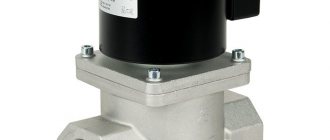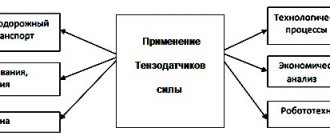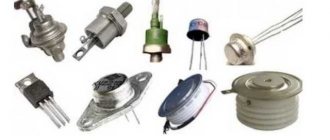When they talk about lithium batteries or accumulators, most often they don’t even realize that almost a dozen varieties have appeared in the last couple of years, each of which is lithium with various additives of other chemical elements, which ultimately differ significantly from each other.
Let's look at their types and start with the classics:
Li-ion batteries
Lithium-ion batteries are classic rechargeable batteries in which lithium ions move from the negative electrode to the positive electrode during discharge and back again when charging. Lithium-ion batteries are widely used in consumer electronics. They are one of the most popular types of rechargeable batteries for portable electronics, with one of the best energy densities, no memory effect and slow loss of charge when not in use (low self-discharge).
This series covers cylindrical and prismatic battery sizes. Li-ion has the highest power density of any old type battery. Very light weight and long life cycle makes it an ideal product for many solutions.
Menu
Before considering the topic, let's remember a few facts from history and define what a Li-ion battery is. Following the advent of primary lithium cells in the 1970s, interest arose in the development of reusable current sources using the Li+(ion)/Li electrochemical system. And there was a good reason: these elements had high specific characteristics, and in the future it was possible to obtain a compact power source. It was precisely portable use that was being discussed at that time; no one had yet thought about such high-capacity batteries due to many problems and their high cost at that time. The first samples of such batteries used metal lithium as negative electrodes (by analogy with primary cells). But when it was charged, due to the presence of a passivating film from the decomposition products of the electrolyte, part of the lithium passed into an inactive state (that is, into particles electrically isolated from each other). The film that formed over time prevented the passage of lithium to the electrodes. Another problem was the formation of dendrites, needle-shaped lithium crystals growing between the electrodes. Their growth led to a short circuit of the battery and its failure (sometimes with ignition and explosion).
Significant efforts were devoted to solving the problem: a search was carried out for new electrolytes that meet all requirements, and all kinds of solutions to prevent the formation of dendrites, production technologies were developed, etc., but the most important problem remained - safety. Lithium metal is found inside the battery case. And when the case was depressurized, the oxidizing lithium combined with oxygen in the air, which led to a fire and/or a sharp increase in the temperature of the case, and sometimes to an explosion. Depressurization could occur, firstly, due to an increase in pressure inside the case, for example during overcharging (in abnormal charging mode); secondly, when the temperature inside the device increases, for example, during external heating; thirdly, due to an internal short circuit, etc. It became impossible to constantly monitor all these parameters; electronic constant monitoring systems were required to prevent, if not all, then most cases of housing depressurization. The electronics industry quickly responded to this: companies began producing all kinds of microcircuits for Li-ion batteries and batteries, and from that time on, such devices became an integral part of any battery of the Li+ (ion)/Li system. (In Fig. 1 you can see a self-resetting fuse (in the form of a “square”), located immediately after one of the battery contacts, before connecting to the control board.)
Rice. 1. Li-ion battery with function support board
Concerns were strong, judging by the fact that one well-known company introduced a Battery Manager Systems (BMS) device to the market. This device contained three microcircuits (in addition to transistors that break the load/charge circuit), and it implemented two levels of hardware protection, independent of each other, and several levels of software protection (the circuit contained a specialized microcontroller). In hardware, a special pyro-fuse was used in the circuit; when activated, the jumper was burned out, regardless of the current flowing through it. The “operation” of the fuse was controlled by a specialized microcircuit. It is clear that all this only increased the cost of the final product and prevented the batteries from entering the mass market. New ideas and approaches were needed, and they appeared.
In passing, we note that today the production of lithium batteries (with lithium metal) has practically ceased; this class of batteries has migrated to the category of “special equipment”, and it is now almost impossible to find or buy them. The mass production of batteries with lithium metal is also hampered by the high cost of production: it is necessary to have equipment that performs the cycle in a sealed volume, which is filled with a medium inert for lithium, and it should not contain moisture (for example, dry boxes), etc.
However, in fairness, it should be noted that work in this direction continues. Two main ones can be distinguished: chemical current sources (CHS) based on the lithium-sulfur (Li/S) system and lithium-oxygen (lithium-air). This applies to both primary cells (disposable) and batteries (rechargeable). If a number of problems (including safety) can be solved, there will be a significant increase in specific characteristics compared to those achieved today for any of the HIT.
At the end of the 1980s, Sony proposed a different operating principle; this direction began to develop in parallel with the main one at that time, which was described above. Thus, in 1991, the first industrial Li-ion batteries with a negative electrode based on carbon material were produced. The operation of a Li-ion battery is based on the principle of intercalation, that is, when it is charged, lithium is introduced into the structure of the negative electrode (which is carbon material) and forms an intercalation compound. In the reverse process, lithium is deintercalated from the negative electrode, that is, it is removed from the carbon crystal lattice, giving up an electron. Below are the electrochemical reactions at both electrodes:
- Positive electrode (using the example of lithium cobaltate): Charge - LiCoO2–xLi+–xe > Li1–xCoO2;
- Discharge – Li1–xCoO2+xLi++xe > LiCoO2;
- Charge - 6С+xLi++xe > LixС6;
Judging by the reactions presented, there is no lithium metal here. Only lithium ions “walk” through the battery, which are in a bound state, both on the positive and negative electrodes. Thanks to this, it was possible to significantly increase the safety of operation of such HIT. In ensuring safety, new materials (for example, separators) and production technologies currently used also played an important role. The fact that the safety issue has been successfully resolved is evidenced by a simple fact: these HITs have been in operation for the second decade. Each of us encounters them every day, using, for example, a mobile phone, tablet computer, etc., without fear of any consequences. Hundreds of millions of batteries have been produced over more than 20 years. SOF, which is part of the batteries, also performs safety functions, but to a greater extent it serves to extend the service life (balancing batteries, preventing discharge below a certain level, which significantly affects the service life, etc.) [].
To prepare the electrolyte of a Li-ion battery, you need solvents that do not contain a free proton and are stable over a wide range of potentials. When charging batteries that use water as the electrolyte base, part of the energy supplied to the battery during charging is spent on its electrolysis. During normal operation of a Li-ion battery, such solvent decomposition does not occur, and almost all of the capacity imparted to the battery during charging will be given back to it during discharge. That is, the ratio of the given capacity during discharge to the received capacity when charging Li+ batteries is close to unity. The battery turned out to be sealed.
In terms of specific characteristics, Li-ion batteries are leaders among mass-produced chemical devices and occupy one of the first places among used electrochemical systems. (For example, silver-zinc batteries have comparable specific characteristics.) Li-ion batteries have high specific energy (up to 190 Wh/kg), high discharge voltage (3.4–4 V or more, depending on the electrode materials used ), very low self-discharge (less than 3% per month) and long service life (more than 1000 cycles, with a decrease in the delivered capacity by 20% from the nominal to the thousandth cycle, that is, 0.8 Cn). Depending on the materials and design, these batteries can operate in the temperature range from –40 to +80 °C and be discharged with currents of more than 100C. At the same time, their cost is constantly decreasing, and the scope of application is expanding.
In Fig. 2 shows possible combinations of specific energy and specific power of various batteries, as well as supercapacitors and fuel cells; the second ordinate axis shows the current with which the HIT can be discharged (in fractions of CH). Supercapacitors have the highest power density; Although they store the least amount of energy in comparison with other HITs, their discharge currents can reach hundreds of Cn. Then come lead-acid batteries of various designs and purposes (red areas), then nickel-cadmium and nickel-metal hydride HITs (green areas on the left). In the middle (yellow area) the so-called thermal HITs are shown, sources operating at temperatures of several hundred degrees, where molten salts serve as the electrolyte. Fuel cells have the highest specific characteristics (green area on the right), but their load capacity is low due to high internal resistance.
Rice. 2. Specific characteristics of HIT. For comparison, the characteristics of supercapacitors and fuel cells are presented
The division of Li+ batteries into high-power, high-capacity and intermediate, occupying a place between the two classes given, is conditional (blue areas). The essence of this division is as follows. Even taking into account the same electrochemical process, the battery itself, as a final product, can be manufactured in different ways (Fig. 3). For example, the conductive base of the electrode (aluminum foil on the positive electrode, copper foil on the negative) in one case can be made thinner and more electrode mass can be applied, and in another - vice versa. The greater the ratio of active electrode masses participating in electrochemical reactions to passive ones not participating in them, the higher the specific characteristics of the final product. However, the thinner the copper foil, the less current it can carry without overheating. And the greater the thickness of the electrode mass layer, the greater its resistance. That is, a battery with a thinner conductive base and a thicker layer of electrode mass will have high stored energy, but low power, and vice versa. To further reduce resistance, active materials with smaller particle sizes are used.
Rice. 3. Electrode masses and current-carrying parts of the battery
By varying the thickness of the electrodes, foil, separator, positive and negative electrode materials, particle sizes, etc., manufacturers can produce a battery with different maximum discharge currents and/or different capacities (within the same standard size of the final product). High-power batteries (with high discharge currents) must also have more massive current leads (borns), this protects the battery from overheating at high current values. In addition, to increase the discharge current, various additives that increase conductivity can be added to the composition of the electrolyte and active masses. All this further reduces the specific indicators (Wh/kg, Wh/dm3).
High-capacity batteries usually have small bores (current collectors) in comparison with the volume of the battery case. Such borns are designed for relatively low discharge currents. It is convenient to measure and compare the discharge/charge current not in absolute units, but in relative ones. The current is tied to the nominal capacity of the battery Cn. Thus, high-capacity batteries are discharged with currents of approximately 2Cn, and charged up to 0.5Cn. For example, if the battery has a capacity of 10 Ah, then the maximum discharge current will be 20 A (half-hour mode).
High-power batteries can be discharged with currents of up to 15-20C. (Individual representatives of this class can be discharged with currents of up to 40 Cn or more.)
High-capacity and high-power batteries are designed for different tasks and have different purposes, although sometimes they are used together in one product: some for starter modes, others for powering low-current equipment.
Large manufacturers of consumer electronics usually do not purchase batteries of one class or another, but order their production, which significantly reduces costs and allows you to get exactly what you need. There are a number of companies that can develop the battery itself and test it according to the customer’s technical requirements, after which the documentation is sent to some manufacturing plant that produces several million batteries.
When designing, almost everything is taken into account - the average current and maximum peak discharge current, capacity (the time of active operation of the device), dimensions, location inside the case and thermal loads from the boards and equipment of the device, the number of charge/discharge cycles, etc. The number of cycles, no matter how strangely, it affects the cost, which plays an important role. Indeed, why make a battery that will not have time to exhaust its life before it will be disposed of along with the device? Thus, almost any portable application (for example, a mobile phone) becomes obsolete within a year, and after 3-4 years it is simply replaced with a new, modern one. During this time, the battery is charged (if you count it for a full charge/discharge cycle) only 300–400 times. By reducing the battery life (using cheaper materials and technologies) to the specified values (with a margin of up to 500), you can save money without putting “excess” into the manufactured device. Usually this path is followed by second-tier and “no name” manufacturers of cheap electronics.
Structurally, Li+ batteries can be divided into two types: according to the method of manufacturing the electrodes and according to the design of the battery case. The design of the electrode block can be of a roll type or consist of a set of individual electrodes (Fig. 4).
Rice. 4. Electrode block designs: a) rolled; b) from a set of individual electrodes
The first design is usually used for small-capacity batteries, the second - for larger samples. The advantages of the roll design include low manufacturing complexity: the electrodes with the separator are rolled up on a special machine. The disadvantages of the roll design are poor heat dissipation from the electrodes to the battery body due to the presence of a separator and electrode masses. Heat removal is carried out mainly at the narrow end of the battery, as shown in Fig. 4a. This leads to difficulties in creating high-capacity batteries of this design, as well as high-power batteries designed to deliver high current for a long time.
The roll design can also be of two types: twisting the electrodes around an imaginary plate (Fig. 4a) and a cylinder. The first method is used mainly for prismatic batteries, while several rolls connected in parallel can be located in one housing.
The design, which consists of individual electrodes, is used for the manufacture of prismatic batteries (Fig. 4b). In this case, heat removal is also mainly carried out from the ends of the electrodes, therefore, for better heat transfer, the electrodes can be located both along the wide wall of the housing (Fig. 4b) and across. The developers thus increase the heat transfer area, improving the operating conditions of the electrode masses. There are two types of cylindrical batteries: with screw borns and with contact pads (Fig. 5).
Rice. 5. Cylindrical Li-ion batteries
The advantages of the cylindrical design are the absence of changes in the volume of the battery during long-term cycling, since here the battery “breathes” (changes its volume slightly when discharging/charging), and the walls of batteries of other designs can be deformed. Cylindrical batteries always use a rolled electrode design. The disadvantages of this design include the relative difficulty of uniformly winding a large roll and poor heat dissipation, so cylindrical batteries with a capacity of more than 50 Ah are rare.
Screw borns are used to improve current collection conditions (to avoid overheating of the borns) and are used in high-power batteries and high-capacity batteries (more than 20 Ah). In Fig. Figure 5 (center, dark yellow) shows two cylindrical batteries, one of which has two screws connected by a jumper. Although these batteries are approximately the same size, their capacity differs by 10 Ah. The battery, which has two screws, has a lower capacity (40 Ah) and is designed to operate with a higher discharge current.
An exception is the ANR26650M1A battery from A123 (in Fig. 5 in the center, to the left of the white SAFT battery). This sample does not have screw borns, only welding pads. Although such a battery can be discharged with currents up to 35Cn (70 A), it is classified as high-power. This can be judged by its size and capacity - with a diameter of 26 mm, its capacity is only about 2 Ah. A battery with a diameter of 18 mm has the same capacity (same height, yellow, in the center in Fig. 5).
As tests have shown, with a long-term constant discharge current of more than 15 Cn, the battery overheats (due to the roll-type design), even if it is placed in a heat-dissipating cradle. Reusing the battery (charge/discharge) is possible only after it has cooled down, that is, after tens of minutes.
This battery is well suited for powering various motors (power tools, etc.), where the initial starting current is high (10–15 Cn for seconds), and as the rotor spins, it drops to an acceptable level (2–3 Cn). The use of a battery in a power tool significantly improves the dynamics of the latter, but imposes additional requirements on the mechanical strength of its parts.
Batteries with contact pads are designed for contact welding of jumpers or solder tabs. Some manufacturers weld the petals for soldering at the factory, which can be found in the relevant documentation. (There may be several types of petals, for example, for a printed circuit board, soldering for a wire, etc.) Soldering batteries to the contact pads yourself is not recommended: local overheating of the case is possible, which can lead to the melting of gaskets that are not intended for high temperatures. As a result, the battery will lose its seal and electrolyte will leak out. Such soldering can lead to excessive heating of the electrode masses and an increase in the rate of their degradation.
The size of cylindrical batteries is usually indicated by several numbers. One of the most common is size 18650 (yellow, in the center in Fig. 5). Here the first numbers indicate the diameter, the second - the height of the cylinder (diameter - 18 mm, height - 65 mm). For prismatic batteries, the standard size consists of three digits (H×W×D; the order may differ among different manufacturers). Li+ battery sizes usually differ from other battery sizes, such as primary, NiCd and NiMH. This is done so that the consumer cannot accidentally replace batteries with a voltage of 1.5 V with a battery with a voltage twice as high: 3.2–3.7 V.
One of the exceptions is the French company SAFT, which produces Li+ batteries of size D (battery in a white shell in Fig. 5). This size is used, in particular, in manganese-zinc cells for household devices, but the battery is designed in such a way that it cannot be directly inserted into such devices or connected to them (a slightly different design of the contact pads).
Prismatic batteries are also manufactured in two types: with screw burners and for welding petals or jumpers (Fig. 6).
The two batteries in the blue shell have a roll design, the smaller one has a capacity of 1.5 Ah - one roll, the larger one - 10 Ah - eight small rolls connected electrically in parallel.
To reduce the cost of production, some companies make riveted burns (far right in Fig. 5), the soldering tabs are riveted directly into the burn. Such batteries are used to power electric bicycles, which are widespread in Southeast Asia. In the background in Fig. Figure 6 shows a yellow battery with a capacity of 90 Ah, having a plastic case and internally threaded connectors. Despite its thick walls (several millimeters), it has sufficient strength and is cheaper to manufacture than stainless steel housings, which must be laser welded.
Rice. 6. Prismatic Li-ion batteries
It should be noted that all case materials used to make the battery structure must be neutral (that is, they should not participate in electrochemical reactions). These include all kinds of gaskets, seals, rivets that close the filling hole after assembly, safety valves, the body itself, etc.
Recently, batteries in a laminated foil housing have become widespread (Fig. 7). The polymer electrolyte in such batteries is in a gel-like state (thickened), which is why they are often called gel polymer. The electrochemical processes taking place in them are no different from those described above, however, the use of a thickened electrolyte allows the entire composition of the battery to be placed in a hermetically sealed bag. Since the battery shell weighs significantly less than the housings of cylindrical and prismatic batteries, they have the highest specific energy (190 Wh/kg or more). Such batteries are varied in size because they do not need a housing.
Rice. 7. Batteries in laminated foil housing
The disadvantages include low mechanical strength and a narrower temperature range (–20…+60 °C), which is due to the very design of the gel polymer battery. When manufacturing a battery with a wider operating temperature range, it is necessary to add fractions to the electrolyte that can evaporate at temperatures above +50...+60 °C. If the rigid body of other types of batteries does not allow such fractions to affect the dimensions, then a polymer battery can simply swell.
The current leads for this type of battery are made of a thin strip of metal. To assemble a battery from batteries, holes or special cutouts are made in the current terminals for bolted connections. The terminals of small-capacity batteries are soldered on a specially made printed circuit board or connected by contact welding. If there is only one battery and it is located inside the device or instrument, the wires are simply soldered to it.
Structurally, laminated batteries can also be divided into two types: in the first, the current leads are located on one side, and in the second, on opposite sides. In Fig. 7, almost all models have current leads on one side; only the battery on the far right has current leads on opposite sides. The arrangement of the terminals on opposite sides is preferable at high discharge currents, since there is a more uniform distribution of currents in the electrode masses, which contributes to less heating and increases the life cycle of the battery itself.
Laminated batteries, due to their flexibility in changing standard sizes in production and manufacturability, have become widespread, and without them it is impossible to imagine the construction of tablets and all kinds of mobile devices. In Fig. 7 shows batteries of various capacities: the bottom (green) - 100 Ah, then in descending order - 35 and 17 Ah (with current leads on opposite sides), 10, 5.5, 2.2 and 1.05 A h.
The safe operation of Li+ batteries is also taken into account in their design: all case batteries are equipped with safety valves. When the pressure inside the housing exceeds, the valve ruptures and releases pressure to the outside, preventing pressure from building up inside and causing the housing to collapse. Safety valves are most often made of thin, notched metal foil that can withstand a certain pressure. However, there are also spring designs: such a valve relieves some of the pressure and can close again.
In small cylindrical batteries, the valve is located directly under the current outlet (Fig. 8). Some manufacturers supply their batteries with a self-recovering fuse (in the form of a round “tablet”), which is rolled directly under the current terminal. This design and the use of a fuse were originally provided for in a cylindrical battery of size 18650 (in Fig. 8 on the left). However, recently, due to significant advances in technology and materials science, they are practically not used. This is also due to the fact that the battery manufacturer in this case depends on the company that produces such fuses: if the design changes, it will be necessary to change the size of the fuse. Therefore, the decision on whether to use a fuse or not rests with the designers of electronic devices and batteries where they are used (Fig. 1).
Rice. 8. Cutouts for emergency release of internal pressure
On high-capacity cylindrical batteries (from 7 Ah), the safety valve can be located either at the end (on the side of the burner) or on the cylindrical body itself. For prismatic batteries, the valve is usually located between the bournes and/or on top (Fig. 4). In any case, when operating and installing batteries in a housing or product, this valve must not be covered with structural elements (boards, tightening elements, etc.).
In all the battery designs we described, various materials can be used, representing both positive and negative electrodes. The electrochemical reaction for the transfer of lithium ions (with lithium cobaltate) discussed at the beginning of the article is not the only one possible. There are others too. However, batteries with electrodes made of other materials and carrying lithium ions will also be classified as Li-ion.
We will talk about the materials used in Li-ion batteries, their advantages and disadvantages in the next article in the series.
To be continued
Literature
- Taganova A. A., Bubnov Yu. I., Orlov S. B. Sealed chemical current sources: elements and batteries. Equipment for testing and operation: Directory. St. Petersburg: Khimizdat, 2005.
- Rykovanov A. S. Element base of systems for ensuring the functioning of Li-ion batteries // Components and technologies. 2012. No. 8.
LTO batteries
Lithium titanate (lithium titanate) is a relatively new class of lithium-ion batteries (read more here). It is characterized by a very long life cycle, measured in thousands of cycles. Lithium lead titanate is also very safe and comparable in this regard to iron phosphate. The energy density is lower than other lithium-ion power sources and its rated voltage is 2.4V.
This technology features very fast charging, low internal resistance, very high life cycle and excellent endurance (also safety). LTO has found its application mainly in electric vehicles and wristwatches. Recently, it has begun to find application in mobile medical devices due to its high security. One of the features of the technology is that it uses nanocrystals on the anode instead of carbon, which provides a much more efficient surface area. Unfortunately, this battery has lower voltages than other types of lithium batteries.
Peculiarities:
- Specific energy: about 30-110Wh/kg
- Energy density: 177 W * h/l
- Specific power: 3,000-5,100 W/kg
- Discharge efficiency: approximately 85%; charging efficiency more than 95%
- Energy-price: 0.5 W/dollar
- Shelf life: >10 years
- Self-discharge: 2-5%/month
- Durability: 6000 cycles to 90% capacity
- Nominal voltage: 1.9 to 2.4 V
- Temperature: -40 to +55°C
- Charging method: Uses stable constant current, then constant voltage until it reaches the threshold.
Chemical formula: Li4Ti5O12 + 6LiCoO2 < > Li7Ti5O12 + 6Li0.5CoO2 (E=2.1 V)
Marking
All parameters of a lithium-ion battery can be found out from the markings on the case. The labeling option may differ for each type of battery. There is no uniform labeling standard yet. But it’s quite easy to understand it, knowing the typical parameters and notations:
- Letters. The first letter is always I, as it denotes the type of technology, i.e. lithium ion. The second letter specifies the composition; there are markings such as M, F, C, N. The third letter indicates that the battery is rechargeable, marking R.
- Numbers. Digital markings indicate dimensions in millimeters. Thus, the first 2 digits are the diameter, the next two are the length. A zero at the end of the marking may indicate a cylindrical shape.
To clarify the values, you must refer to the battery documents or the manufacturer. Each of them may have different markings. There is also no standard for applying a production date marker.
Li-Polymer batteries
Lithium polymer has a higher energy density in terms of weight than lithium-ion batteries. In very thin cells (up to 5 mm), lithium polymer provides high volumetric energy density. Excellent stability in overvoltage and high temperatures.
This series of batteries can be produced in the range from 30 to 23000 mAh, prismatic and cylindrical housing types. Lithium polymer batteries offer a number of advantages: greater energy density by volume, flexibility in cell sizes, and a wider margin of safety, with excellent voltage stability even at high temperatures. Main areas of application: portable players, Bluetooth, wireless devices, PDAs and digital cameras, electric bicycles, GPS navigators, laptops, e-readers.
Peculiarities:
- Rated voltage: 3.7V
- Charging voltage: 4.2±0.05V
- Charge current, speed: 0.2-10C
- Discharge voltage limit: 2.5 V
- Discharge speed: up to 50C
- Cycle endurance: 400 cycles
Shape and dimensions
Lithium cells can be in the form of a parallelepiped or a cylinder.
Phones and tablets are equipped with thin wafer-like batteries. Screwdrivers and laptops are equipped with elements with a round cross-section. The most popular such format is 18650. The diameter of this battery is 18 millimeters and the length is 65. There are other variations, for example: 26650, 21700. Its capacity also depends on the size of the element.
Standard sizes 26650 21700
LiFePO4 batteries
Lithium iron phosphate has good safety characteristics, long service life (up to 2000 cycles), and low production cost. LiFePO4 batteries are well suited for high discharge current applications such as military equipment, power tools, electric bicycles, mobile computers, UPS and solar power systems.
As a new anode material for lithium-ion batteries, lifepo4 was first introduced in 1997 and has been continuously improved to date. It has attracted the attention of experts due to its reliable safety, durability, low environmental impact during disposal, and convenient charging and discharging characteristics. Many experts claim that lifepo4 batteries are by far the best option for autonomously powering electronics.
Li-SO2 batteries
Lithium sulfur dioxide (Li and SO2 battery) – these batteries have high energy density and good resistance to high power discharge. Such elements are used mainly in military science, meteorology and astronautics.
Lithium sulfur dioxide batteries with a lithium metal anode (the lightest of all metals) and a liquid cathode containing a porous carbon current collector filled with sulfur dioxide (SO2) produce a voltage of 2.9 V and are cylindrical in shape.
Peculiarities:
- High operating voltage, stable throughout most of the discharge
- Extremely low self-discharge
- Performance in extreme conditions
- Wide operating temperature range (-55°C to +65°C)
Can lithium batteries be charged?
Disposable lithium batteries cannot be charged! Rechargeable batteries are used with a special charger. They can withstand up to 1000 recharges, significantly saving the budget for the purchase of disposable elements.
How to determine what you have in front of you, a rechargeable battery or a disposable battery? Information before your eyes. The capacity in mAh is indicated on the battery; there is no such information on the lithium battery. The price will hint at the battery, it is high. The product will definitely be marked “rechargeable” - rechargeable.
If you work professionally with flash and other powerful equipment, buy a flat polymer or cylindrical rechargeable lithium battery. This is more profitable than purchasing large quantities of disposable items.
Li-MnO2 batteries
Lithium Manganese Dioxide (Li-MnO2 Battery) – These batteries have a lightweight lithium metal anode and a solid manganese dioxide cathode immersed in a non-corrosive, non-toxic organic electrolyte. This type of battery is EU RoHS compliant and is characterized by large capacity, high discharge capacity and long service life.
Li-MnO2 is widely used in backup power supplies, emergency beacons, fire alarms, electronic access control systems, digital cameras, medical equipment.
Peculiarities:
- High energy density
- Very stable discharge voltage
- More than 10 year shelf life
- Operating temperature: -40 to +60°C
How to replace the battery?
Replacing weak disposable power supplies takes a heavy toll on finances. Therefore, many people are thinking about purchasing rechargeable batteries. Lithium batteries are undoubtedly the most suitable for these purposes.
Particularly popular in Internet search engines are requests for the transition of old modifications of screwdrivers to lithium batteries. For these purposes, you only need to select lithium analogs of the same size and voltage that are suitable for the screwdriver.
Li-SOCL2 batteries
Lithium thionyl chloride (lithium-SOCl2) batteries have a lightweight lithium metal anode and a liquid cathode containing a porous carbon current collector filled with thionyl chloride (SOCl2). Li-SOCL2 batteries are ideal for automotive devices, medical devices, and military and aerospace applications. They have the widest operating temperature range from -60 to + 150°C.
Peculiarities:
- High energy density
- Long shelf life
- Wide temperature range
- Good sealing
- Stable discharge voltage
Lithium battery life
When stored properly, lithium AA batteries will operate reliably for up to 10 years when connected. Often, the self-discharge rate is 2% per year when stored at room conditions, t = 20 0 C.
The release date and expiration date can be found on the case in the form of an alphanumeric code. Encrypted in different ways, only in numbers, 5 characters mean the day, month and year (40615), and the code 9A14 should be read January 9, 2014. The expiration date is given separately. The expiration date is valid if the battery is in its packaging and has never been used.

